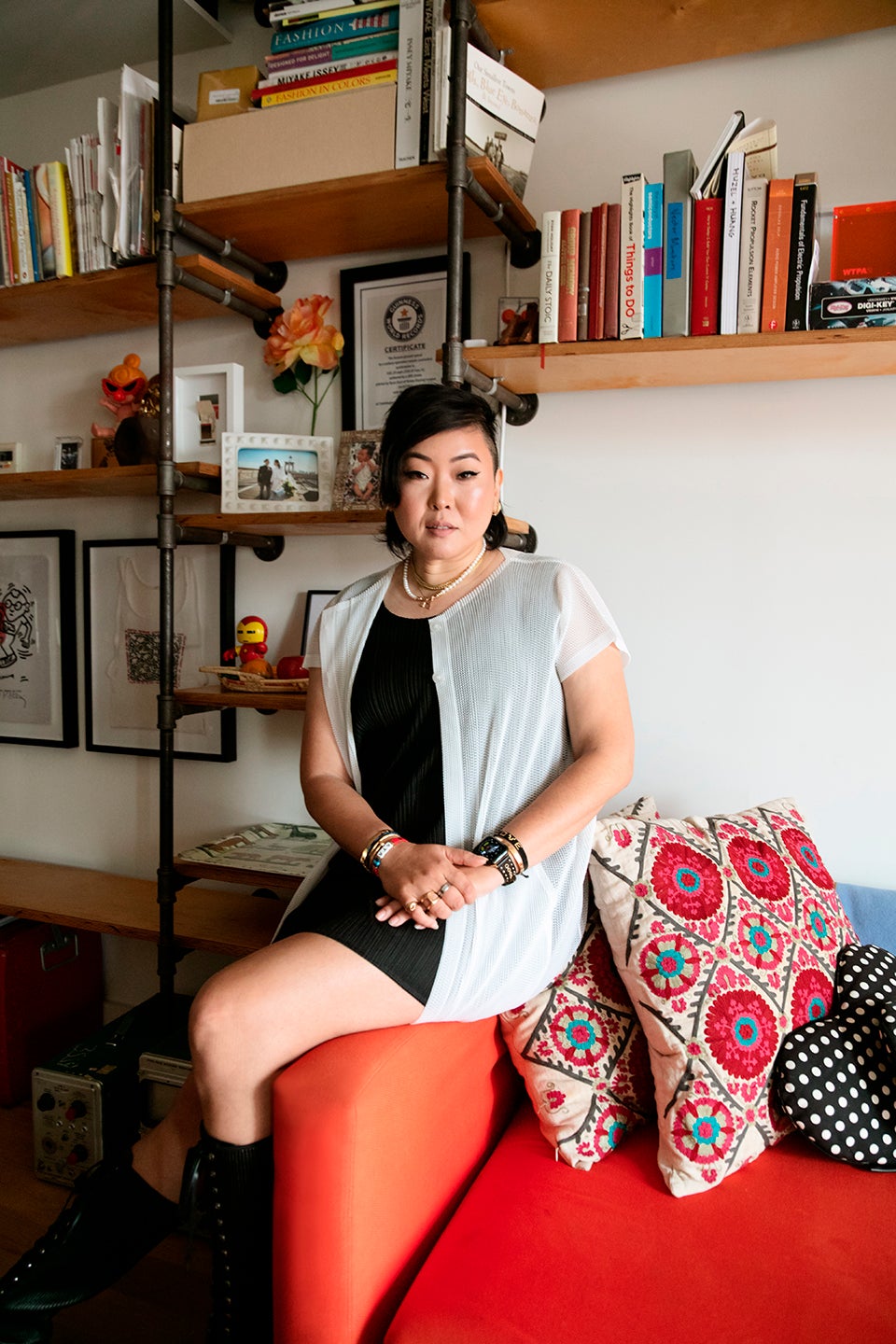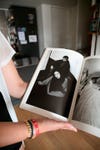The Wild Story of How Pinterest’s Aya Kanai Came to Own Keith Haring’s Work as a Kid
A very “only in New York” moment.
Updated Sep 27, 2018 12:25 AM
We may earn revenue from the products available on this page and participate in affiliate programs.
The most beloved things in our homes aren’t just things—they hold the stories of where we come from and where we’re going. In Conversation Piece, creatives explore their roots through one meaningful object.
Back in the 1980s, New York was such a different place. It was much less business oriented, much smaller—everyone knew one another in the artist community. My parents moved to the U.S. from Japan separately in the late ’60s, then met in the city through a friend they had in common. They got married and had two American (much to their dismay!) kids.
By then my father was a graphic designer and my mother was working with avant-garde Japanese fashion designer Issey Miyake, who was building his brand in America (she’s been with the company full-time ever since, even though she’s now in her 70s).
Growing up I was surrounded by cool creatives. My dad collaborated with Irving Penn, and my parents were friends with model Grace Jones. She has a son who’s my age, and I would go to his birthday parties. I didn’t ever think about stuff like that because it was my childhood, but obviously, as an adult, I see that I was lucky to be exposed to so much culture as a young person.
Around the time I was in third or fourth grade, the team at Issey Miyake was launching menswear, and they had this idea to do a photo series with William Coupon of New York artists wearing the clothes in their own self-styled, personal way—people such as Miles Davis, Keith Haring, and Jean-Michel Basquiat, whom my mom remembers was just a kid who showed up on his bicycle for the shoot.
Keith’s fitting was on a Saturday. I was on a playdate, so my mom brought me and my friend to his huge, high-ceilinged SoHo loft, the kind that doesn’t exist anymore. There were canvases everywhere and this boom box that he’d graffitied all over. What my mom didn’t know at the time was that Keith loves kids, and we ended up hanging out there for much longer than we intended. My friend and I didn’t even realize we were meeting a famous artist, but seeing his work delighted us.
On the day of the photo shoot, Keith gave my mother a bunch of swag, including two shirts that he had signed for me to keep. The tank top actually has my name written in the collar because I took it to camp one summer. The T-shirt now has ketchup stains. But I love that about them because it shows that they were a part of my life—I didn’t realize I was holding on to something special until way later.
Today the shirts hang in my living room, where my daughter, Rei, can see them. Whether I’ll be able to introduce her to the icons of our time is questionable, but I do want her to grow up in a world where she sees her parents as people who are creatively and professionally satisfied.
When I think about how personal style has inspired everything I do at Pinterest, it was those moments, like when I met Keith, that were so important in fostering my perspective. I framed the shirts as a reminder of the unique opportunity I had to be part of an artistic community in New York City as a child in the ’80s—a time that’s gone. There was no social media. No publicists. No instant way to get out your message. It’s why I, in my heart of hearts, wanted my current job, so that I could give artists the tools to tell their own stories. It’s what fulfills me.
As told to Julie Vadnal.


